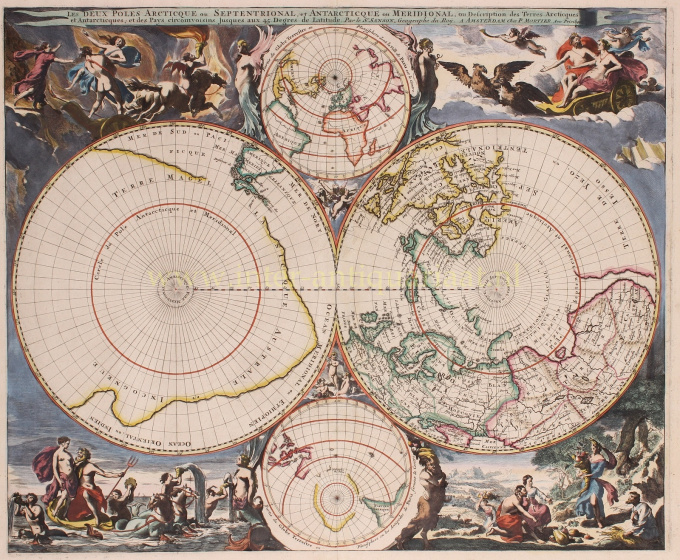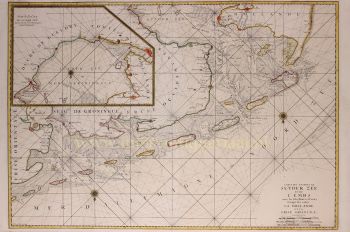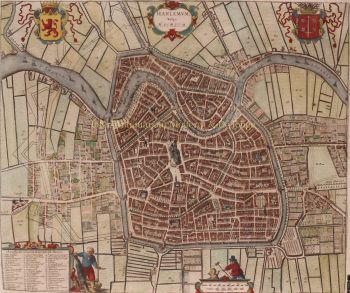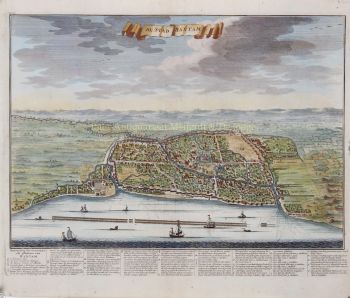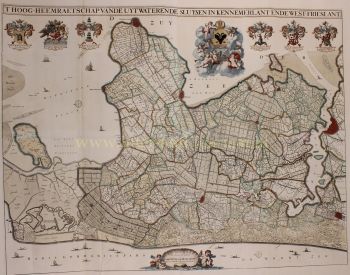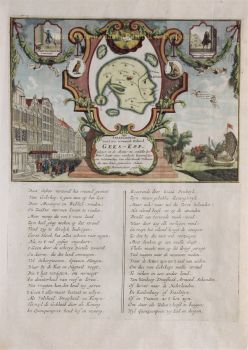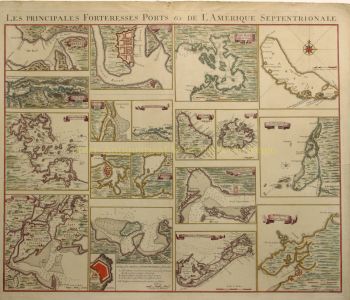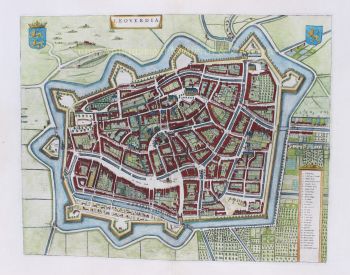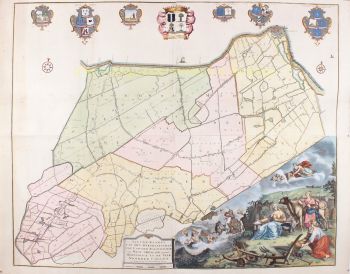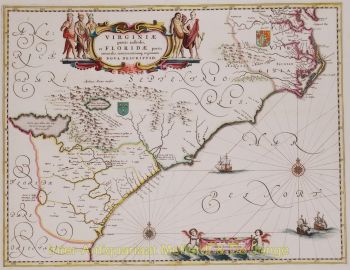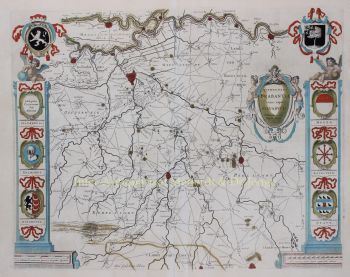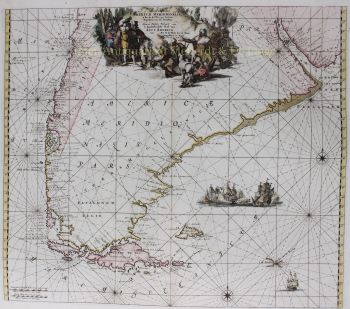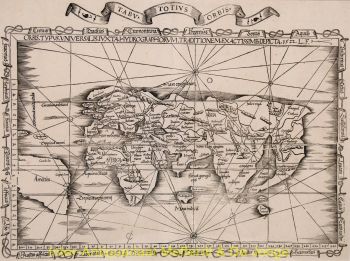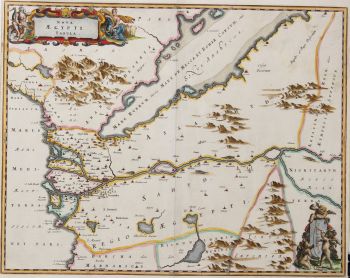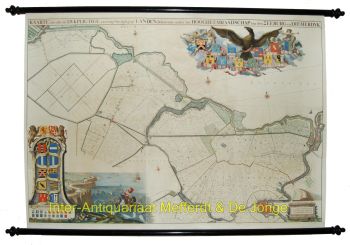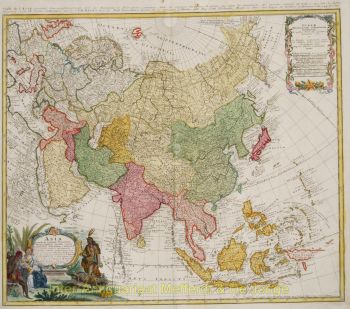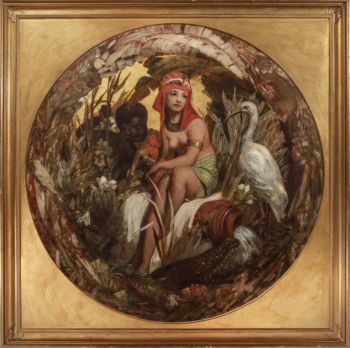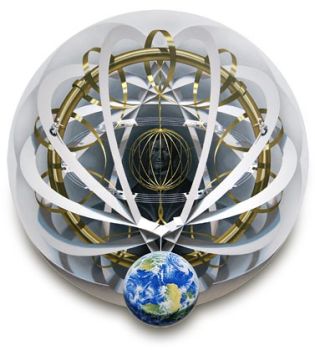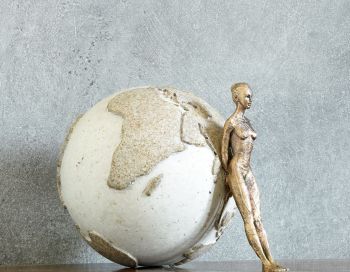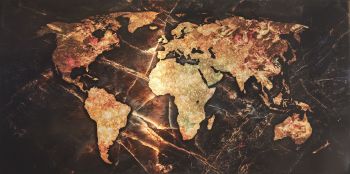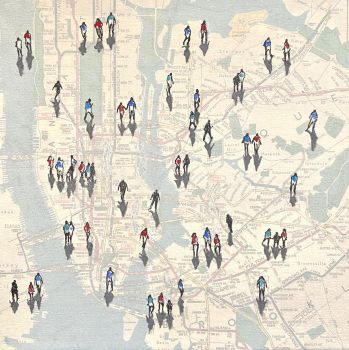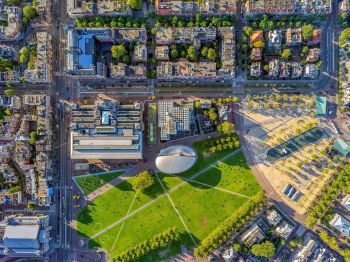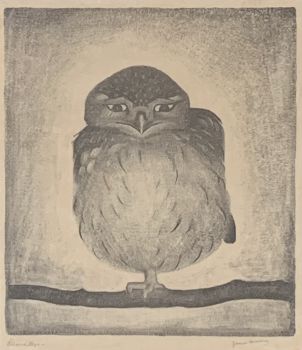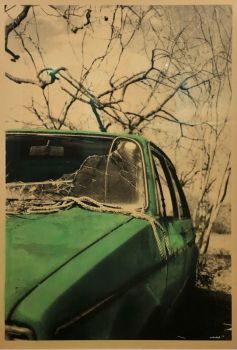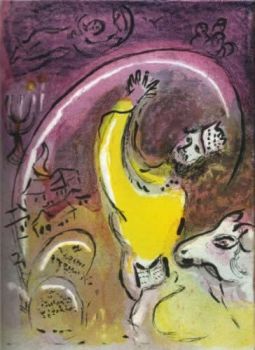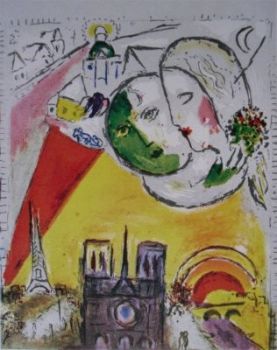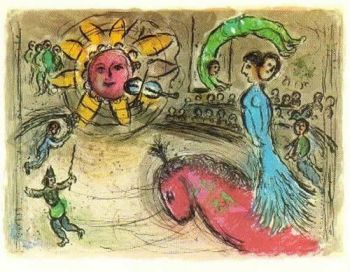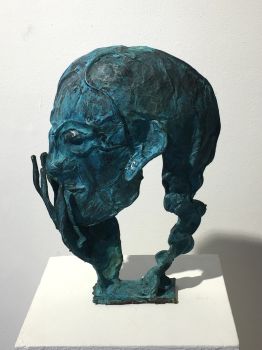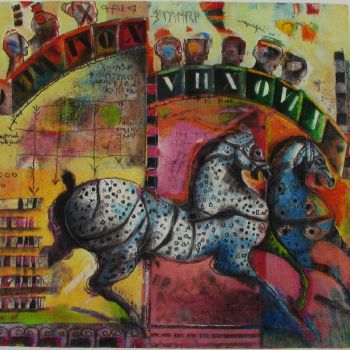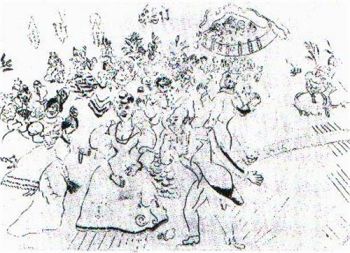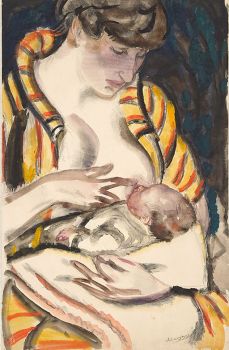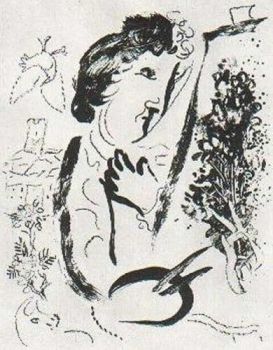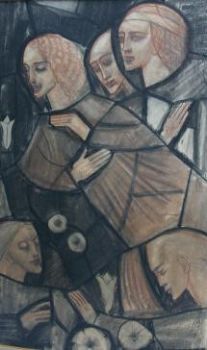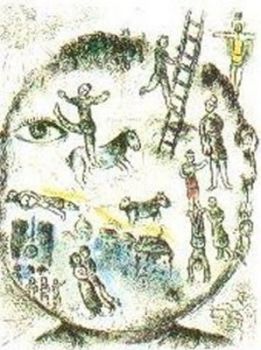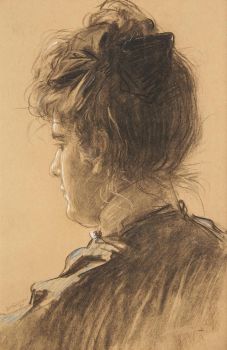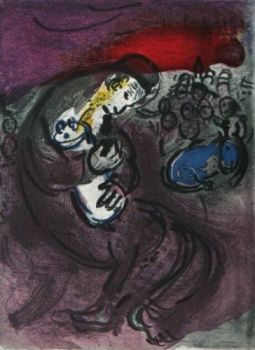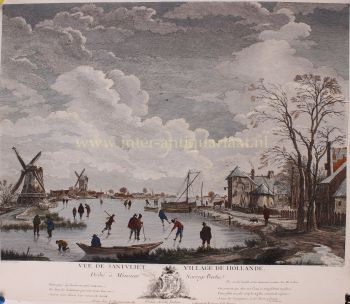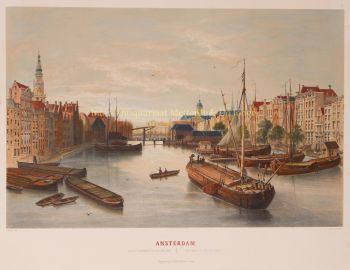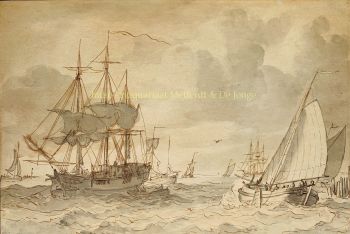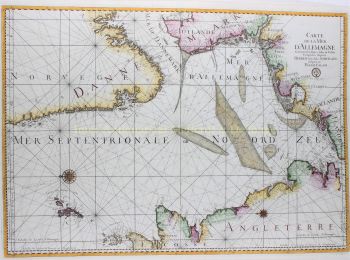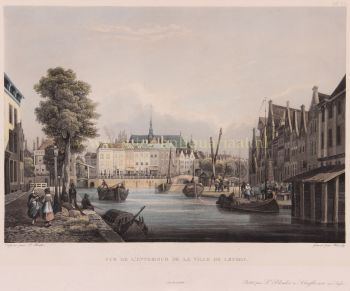North- and South Pole 1696
Pieter Mortier
Inter-Antiquariaat Mefferdt & De Jonge
- About the artworkPOLAR PROJECTION MAP ON TWO HEMISPHERES “Les Deux Poles Arctique ou Septentrional, et Antarctique ou Meridional, ou Description des Terres Arctiques et Antarctiques ; et des Pays circomvoisins jusques aux 45. Degres de Latitude.” (The two poles – Arctic on the northern hemisphere, and Antarctic on the southern, as well as the description of the Arctic and Antartic earth and the surrounding lands up until 45 degrees latitude.) Copper engraving published by Pieter Mortier in Amsterdam after the design by Nicolas Sanson. The map was included in Pieter Mortier's Atlas Nouveau in 1696. With original hand colouring. Size: approx. 43 x 52 cm. This is a beautiful example of Pieter Mortier's double-hemisphere map of the north and south poles. The primary hemispheres focus on the northern and southern thirds of the world. The secondary hemispheres show the entire world, centered respectively on Paris and its antipodes. The geographical content of the primary hemispheres is drawn from the 1657 map of French cartographer Nicolas Sanson (whose title is shared by the present work.) These do not constitute a world map per se. The polar projections end at 45º south and north respectively. The southern polar projection on the right is dominated by a massive southern continent, marked “Terre Magellanique Australe et Incogneue” (the southern and unknown land of Magellanica.) The northern hemisphere shows Europe north of central France and the Black Sea, Asia north of the Caspian Sea and Turkestan, and Spitzbergen and Nova Zemla are shown as partial coastlines. North America shows the Great Lakes in their unfinished form. The northern part of North America is shown including the Saint Lawrence River, Newfoundland, and the Canadian Maritimes. Hudson's Bay, Button's Bay, Baffin's Bay, and the Davis Strait are all shown, with numerous openings in the coastline suggesting the possibility of a Northwest Passage. Greenland is shown as a landmass contiguous with North America, and nearly connecting with Spitzbergen. Additionally, the North American landmass reaches westward to include the speculative “Terre de Yezo, ou Iesso”, which contemporaneous cartographers presented as beginning as the island of Hokkaido. The decorative elements - up to and including the framing of the secondary hemispheres, and the cartouche banner - are copied from Nicolas Visscher’s world map of 1658. Visscher's artist - the Dutch painter Nicolaes Berchem - created nuanced, layered allegorical scenes representing each of the four elements in the map's four corners. The scene for 'Air' in the upper right corner shows Zeus and Hera in a chariot pulled by eagles, with putti flying in attendance. For 'Earth', in a woodland scene at the bottom right, Demeter gifts a hungry mankind the fruits of the Earth, in an overflowing cornucopia. The scene representing 'Fire' in the upper left corner takes place in the underworld, showing the abduction of Persephone by Hades. In the aquatic scene in the lower left, Poseidon woos Aphrodite in a hippocampus-drawn chariot, with mermen bugling wetly from conches and playing tambourines. The top ancillary hemisphere is flanked by angelic figures, while the bottom is flanked by a mermaid (facing the water scene) and a satyr facing the Earth vignette. The cruxes of the four hemispheres are each peopled with a trio of putti. Price: Euro 4.950,-
- About the artist
The first Pieter Mortier (Leiden, 1661 – Amsterdam, 1711) was the son of a political refugee from France, and became a mapmaker and engraver. He travelled to Paris in 1681–1685, then returned to Amsterdam where he operated as a bookseller from 1685 until 1711.
He won the privilege in 1690 of publishing maps and atlases by French publishers in Amsterdam for the Dutch market. He used this privilege to win a similar set of privileges for printing an "illustrated print bible" in 1700. Also known as "Mortier's Bible" (Dutch: Mortierbijbel or Prentbijbel Mortier), this book's official name was Historie des Ouden en Nieuwen Testaments, verrykt met meer dan vierhonderd printverbeeldingen in koper gesneeden ("History of the Old and New Testaments: enriched with more than four hundred printed illustrations cut in copper").
In Amsterdam, he was located at Middeldam, 1685–1686, and then at Vijgendam, 1686–1711. His sign board was "Stad van Parijs" between 1685 and 1700. He was known to have used a fictitious publishing address in Antwerp and also in London. The Short Title Catalogue Netherlands attributes the publication of 261 titles to Pieter Mortier I.
During the first decade of the eighteenth century, Mortier challenged the Huguenot Estienne Roger for domination of the polyphonic sheet music market by implementing a price war.
He married Amelia 's-Gravensande (1666–1719), who, as a widow, ran his publishing business until her death. The couple had two sons, Pieter Mortier II (see below) and Cornelis Mortier (1699–1783), who in partnership with Johannes Covens I (1697–1774) began the map publishing company Covens & Mortier (1721–1866) that became the largest cartographic publisher in the eighteenth century.
Are you interested in buying this artwork?
Artwork details
Related artworks
- 1 - 4 / 24
Jean-François Rauzier
Oasis Hotel - Limited edition of 8 2017
Price on requestVilla del Arte Galleries
Cornelis Anthonisz Theunissen
VERY RARE FIRST PRINTED MAP OF AMSTERDAM, A CITY ON THE RISE1544
€ 175.000Inter-Antiquariaat Mefferdt & De Jonge
 Curated by
Curated byDanny Bree
Unknown artist
A large wall map of Asia by Nicolas de Fer 1647 - 1720
Price on requestZebregs & Röell - Fine Art - Antiques
1 - 4 / 17- 1 - 4 / 24
- 1 - 4 / 12

